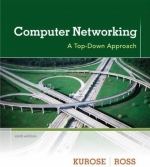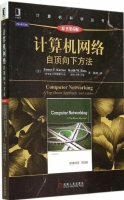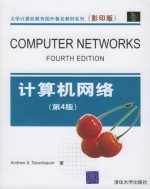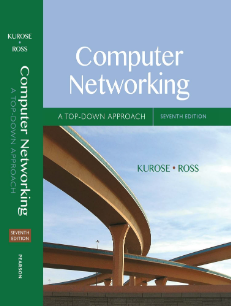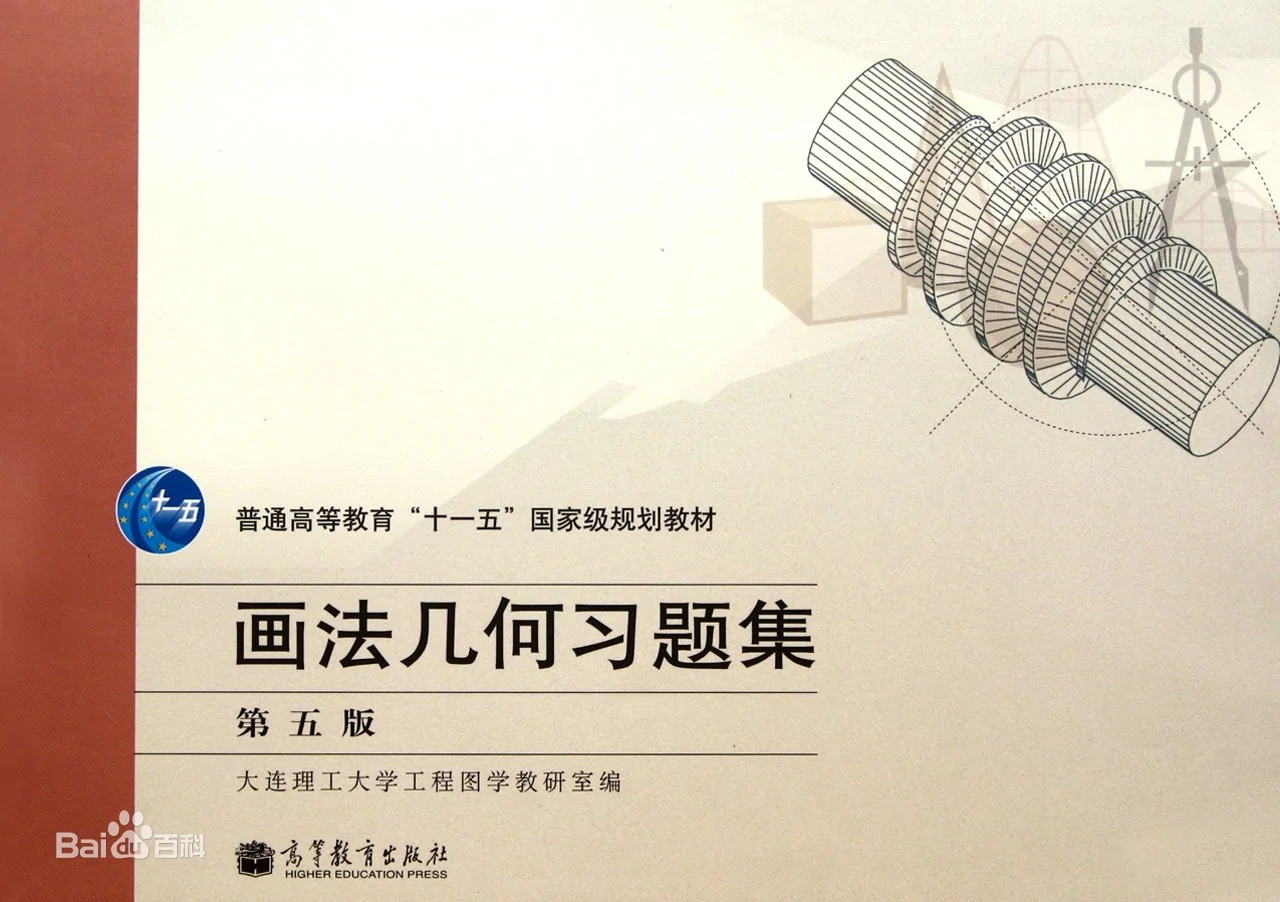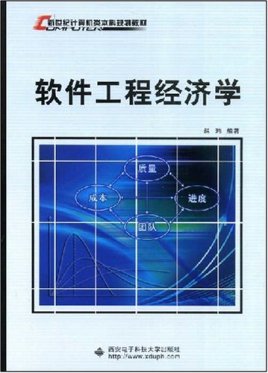Computer Networking continues with an early emphasis on application-layer paradigms and application programming interfaces (the top layer), encouraging a hands-on experience with protocols and networking concepts, before working down the protocol stack to
目录
- Chapter 1 Computer Networks and the Internet 1
- 1.1 What Is the Internet? 2
- 1.1.1 A Nuts-and-Bolts Description 2
- 1.1.2 A Services Description 5
- 1.1.3 What Is a Protocol? 7
- 1.2 The Network Edge 9
- 1.2.1 Access Networks 12
- 1.2.3 Physical Media 18
- 1.3 The Network Core 22
- 1.3.1 Packet Switching 22
- 1.3.2 Circuit Switching 27
- 1.3.3 A Network of Networks 32
- 1.4 Delay, Loss, and Throughput in Packet-Switched Networks 35
- 1.4.1 Overview of Delay in Packet-Switched Networks 35
- 1.4.2 Queuing Delay and Packet Loss 39
- 1.4.3 End-to-End Delay 42
- 1.4.4 Throughput in Computer Networks 44
- 1.5 Protocol Layers and Their Service Models 47
- 1.5.1 Layered Architecture 47
- 1.5.2 Encapsulation 53
- 1.6 Networks Under Attack 55
- 1.7 History of Computer Networking and the Internet 60
- 1.7.1 The Development of Packet Switching: 1961—1972 60
- 1.7.2 Proprietary Networks and Internetworking: 1972—1980 62
- 1.7.3 A Proliferation of Networks: 1980—1990 63
- 1.7.4 The Internet Explosion: The 1990s 64
- 1.7.5 The New Millennium 65
- 1.8 Summary 66
- Homework Problems and Questions 68
- Problems 70
- Wireshark Lab 78
- Interview: Leonard Kleinrock 80
- Chapter 2 Application Layer 83
- 2.1 Principles of Network Applications 84
- 2.1.1 Network Application Architectures 86
- 2.1.2 Processes Communicating 88
- 2.1.3 Transport Services Available to Applications 91
- 2.1.4 Transport Services Provided by the Internet 93
- 2.1.5 Application-Layer Protocols 96
- 2.1.6 Network Applications Covered in This Book 97
- 2.2 The Web and HTTP 98
- 2.2.1 Overview of HTTP 98
- 2.2.2 Non-Persistent and Persistent Connections 100
- 2.2.3 HTTP Message Format 103
- 2.2.4 User-Server Interaction: Cookies 108
- 2.2.5 Web Caching 110
- 2.2.6 The Conditional GET 114
- 2.3 File Transfer: FTP 116
- 2.3.1 FTP Commands and Replies 118
- 2.4 Electronic Mail in the Internet 118
- 2.4.1 SMTP 121
- 2.4.2 Comparison with HTTP 124
- 2.4.3 Mail Message Format 125
- 2.4.4 Mail Access Protocols 125
- 2.5 DNS–The Internet’s Directory Service 130
- 2.5.1 Services Provided by DNS 131
- 2.5.2 Overview of How DNS Works 133
- 2.5.3 DNS Records and Messages 139
- 2.6 Peer-to-Peer Applications 144
- 2.6.1 P2P File Distribution 145
- 2.6.2 Distributed Hash Tables (DHTs) 151
- 2.6.3 Case Study: P2P Internet Telephony with Skype 158
- 2.7 Socket Programming: Creating Network Applications 156
- 2.7.1 Socket Programming with UDP 157
- 2.7.2 Socket Programming with TCP 163
- 2.8 Summary 168
- Homework Problems and Questions 169
- Problems 171
- Socket Programming Assignments 179
- Wireshark Labs 181
- Interview: Bram Cohen 182
- Chapter 3 Transport Layer 185
- 3.1 Introduction and Transport-Layer Services 186
- 3.1.1 Relationship Between Transport and Network Layers 186
- 3.1.2 Overview of the Transport Layer in the Internet 189
- 3.2 Multiplexing and Demultiplexing 191
- 3.3 Connectionless Transport: UDP 198
- 3.3.1 UDP Segment Structure 202
- 3.3.2 UDP Checksum 202
- 3.4 Principles of Reliable Data Transfer 204
- 3.4.1 Building a Reliable Data Transfer Protocol 206
- 3.4.2 Pipelined Reliable Data Transfer Protocols 215
- 3.4.3 Go-Back-N (GBN) 218
- 3.4.4 Selective Repeat (SR) 223
- 3.5 Connection-Oriented Transport: TCP 230
- 3.5.1 The TCP Connection 231
- 3.5.2 TCP Segment Structure 233
- 3.5.3 Round-Trip Time Estimation and Timeout 238
- 3.5.4 Reliable Data Transfer 242
- 3.5.5 Flow Control 250
- 3.5.6 TCP Connection Management 252
- 3.6 Principles of Congestion Control 259
- 3.6.1 The Causes and the Costs of Congestion 259
- 3.6.2 Approaches to Congestion Control 265
- 3.6.3 Network-Assisted Congestion-Control Example:
- ATM ABR Congestion Control 266
- 3.7 TCP Congestion Control 269
- 3.7.1 Fairness 279
- 3.8 Summary 283
- Homework Problems and Questions 285
- Problems 288
- Programming Assignments 300
- Wireshark Lab: Exploring TCP 301
- Wireshark Lab: Exploring UDP 301
- Interview: Sally Floyd 302
- Chapter 4 The Network Layer 305
- 4.1 Introduction 306
- 4.1.1 Forwarding and Routing 308
- 4.1.2 Network Service Models 310
- 4.2 Virtual Circuit and Datagram Networks 313
- 4.2.1 Virtual-Circuit Networks 314
- 4.2.2 Datagram Networks 317
- 4.2.3 Origins of VC and Datagram Networks 319
- 4.3 What’s Inside a Router? 320
- 4.3.1 Input Processing 322
- 4.3.2 Switching 324
- 4.3.3 Output Processing 326
- 4.3.4 Where Does Queuing Occur? 327
- 4.3.5 The Routing Control Plane 331
- 4.4 The Internet Protocol (IP): Forwarding and Addressing in the Internet 331
- 4.4.1 Datagram Format 332
- 4.4.2 IPv4 Addressing 338
- 4.4.3 Internet Control Message Protocol (ICMP) 353
- 4.4.4 IPv6 356
- 4.4.5 A Brief Introduction into IP Security 362
- 4.5 Routing Algorithms 363
- 4.5.1 The Link-State (LS) Routing Algorithm 366
- 4.5.2 The Distance-Vector (DV) Routing Algorithm 371
- 4.5.3 Hierarchical Routing 379
- 4.6 Routing in the Internet 383
- 4.6.1 Intra-AS Routing in the Internet: RIP 384
- 4.6.2 Intra-AS Routing in the Internet: OSPF 388
- 4.6.3 Inter-AS Routing: BGP 390
- 4.7 Broadcast and Multicast Routing 399
- 4.7.1 Broadcast Routing Algorithms 400
- 4.7.2 Multicast 405
- 4.8 Summary 412
- Homework Problems and Questions 413
- Problems 416
- Socket Programming Assignment 428
- Programming Assignment 429
- Wireshark Labs 430
- Interview: Vinton G. Cerf 431
- Chapter 5 The Link Layer: Links, Access Networks, and LANs 433
- 5.1 Introduction to the Link Layer 434
- 5.1.1 The Services Provided by the Link Layer 436
- 5.1.2 Where Is the Link Layer Implemented? 437
- 5.2 Error-Detection and -Correction Techniques 438
- 5.2.1 Parity Checks 440
- 5.2.2 Checksumming Methods 442
- 5.2.3 Cyclic Redundancy Check (CRC) 443
- 5.3 Multiple Access Links and Protocols 445
- 5.3.1 Channel Partitioning Protocols 448
- 5.3.2 Random Access Protocols 449
- 5.3.3 Taking-Turns Protocols 459
- 5.3.4 DOCSIS: The Link-Layer Protocol for Cable Internet Access 460
- 5.4 Switched Local Area Networks 461
- 5.4.1 Link-Layer Addressing and ARP 462
- 5.4.2 Ethernet 469
- 5.4.3 Link-Layer Switches 476
- 5.4.4 Virtual Local Area Networks (VLANs) 482
- 5.5 Link Virtualization: A Network as a Link Layer 486
- 5.5.1 Multiprotocol Label Switching (MPLS) 487
- 5.6 Data Center Networking 490
- 5.7 Retrospective: A Day in the Life of a Web Page Request 495
- 5.7.1 Getting Started: DHCP, UDP, IP, and Ethernet 495
- 5.7.2 Still Getting Started: DNS, ARP 497
- 5.7.3 Still Getting Started: Intra-Domain Routing to the DNS Server 498
- 5.7.4 Web Client-Server Interaction: TCP and HTTP 499
- 5.8 Summary 500
- Homework Problems and Questions 502
- Problems 503
- Wireshark Labs 510
- Interview: Simon S. Lam 511
- Chapter 6 Wireless and Mobile Networks 513
- 6.1 Introduction 514
- 6.2 Wireless Links and Network Characteristics 519
- 6.2.1 CDMA 522
- 6.3 WiFi: 802.11 Wireless LANs 526
- 6.3.1 The 802.11 Architecture 527
- 6.3.2 The 802.11 MAC Protocol 531
- 6.3.3 The IEEE 802.11 Frame 537
- 6.3.4 Mobility in the Same IP Subnet 541
- 6.3.5 Advanced Features in 802.11 542
- 6.3.6 Personal Area Networks: Bluetooth and Zipbee 544
- 6.4 Cellular Internet Access 546
- 6.4.1 An Overview of Cellular Network Architecture 547
- 6.4.2 3G Cellular Data Networks: Extending the Internet to Cellular Subscribers 550
- 6.4.3 On to 4G: LTE 553
- 6.5 Mobility Management: Principles 555
- 6.5.1 Addressing 557
- 6.5.2 Routing to a Mobile Node 559
- 6.6 Mobile IP 564
- 6.7 Managing Mobility in Cellular Networks 570
- 6.7.1 Routing Calls to a Mobile User 571
- 6.7.2 Handoffs in GSM 572
- 6.8 Wireless and Mobility: Impact on Higher-Layer Protocols 575
- 6.9 Summary 578
- Homework Problems and Questions 578
- Problems 580
- Wireshark Labs 583
- Interview: Deborah Estrin 584
- Chapter 7 Multimedia Networking 587
- 7.1 Multimedia Networking Applications 588
- 7.1.1 Properties of Video 588
- 7.1.2 Properties of Audio 590
- 7.1.3 Types of Multimedia Network Applications 591
- 7.2 Streaming Stored Video 593
- 7.2.1 UDP Streaming 595
- 7.2.2 HTTP Streaming 596
- 7.2.3 Adaptive Streaming and DASH 600
- 7.2.4 Content Distribution Networks 602
- 7.2.5 Case Studies: Netflix, YouTube, and KanKan 608
- 7.3 Voice-over-IP 612
- 7.3.1 Limitations of the Best-Effort IP Service 612
- 7.3.2 Removing Jitter at the Receiver for Audio 614
- 7.3.3 Recovering from Packet Loss 618
- 7.3.4 Case Study: Internet Telephony with Skype 621
- 7.4 Protocols for Real-Time Interactive Applications 623
- 7.4.1 RTP 623
- 7.4.2 SIP 626
- 7.5 Network Support for Multimedia 632
- 7.5.1 Dimensioning Best-Effort Networks 634
- 7.5.2 Providing Multiple Classes of Service 636
- 7.5.3 Diffserv 648
- 7.5.4 Per-Connection Quality-of-Service (QoS) Guarantees:
- Resource Reservation and Call Admission 652
- 7.6 Summary 655
- Homework Problems and Questions 656
- Problems 658
- Programming Assignment 666
- Interview: Henning Schulzrinne 668
- Chapter 8 Security in Computer Networks 671
- 8.1 What Is Network Security? 672
- 8.2 Principles of Cryptography 675
- 8.2.1 Symmetric Key Cryptography 676
- 8.2.2 Public Key Encryption 683
- 8.3 Message Integrity and Digital Signatures 688
- 8.3.1 Cryptographic Hash Functions 689
- 8.3.2 Message Authentication Code 691
- 8.3.3 Digital Signatures 693
- 8.4 End-Point Authentication 700
- 8.4.1 Authentication Protocol ap1.0 700
- 8.4.2 Authentication Protocol ap2.0 701
- 8.4.3 Authentication Protocol ap3.0 701
- 8.4.4 Authentication Protocol ap3.1 703
- 8.4.5 Authentication Protocol ap4.0 703
- 8.5 Securing E-mail 705
- 8.5.1 Secure E-mail 706
- 8.5.2 PGP 710
- 8.6 Securing TCP Connections: SSL 711
- 8.6.1 The Big Picture 713
- 8.6.2 A More Complete Picture 716
- 8.7 Network-Layer Security: IPsec and Virtual Private Networks 718
- 8.7.1 IPsec and Virtual Private Networks (VPNs) 718
- 8.7.2 The AH and ESP Protocols 720
- 8.7.3 Security Associations 720
- 8.7.4 The IPsec Datagram 721
- 8.7.5 IKE: Key Management in IPsec 725
- 8.8 Securing Wireless LANs 726
- 8.8.1 Wired Equivalent Privacy (WEP) 726
- 8.8.2 IEEE802.11i 728
- 8.9 Operational Security: Firewalls and Intrusion Detection Systems 731
- 8.9.1 Firewalls 731
- 8.9.2 Intrusion Detection Systems 739
- 8.10 Summary 742
- Homework Problems and Questions 744
- Problems 746
- Wireshark Lab 752
- IPsec Lab 752
- Interview: Steven M. Bellovin 753
- Chapter 9 Network Management 755
- 9.1 What Is Network Management? 756
- 9.2 The Infrastructure for Network Management 760
- 9.3 The Internet-Standard Management Framework 764
- 9.3.1 Structure of Management Information: SMI 766
- 9.3.2 Management Information Base: MIB 770
- 9.3.3 SNMP Protocol Operations and Transport Mappings 772
- 9.3.4 Security and Administration 775
- 9.4 ASN.1 778
- 9.5 Conclusion 783
- Homework Problems and Questions 783
- Problems 784
- Interview: Jennifer Rexford 786
- References 789
- Index 823

